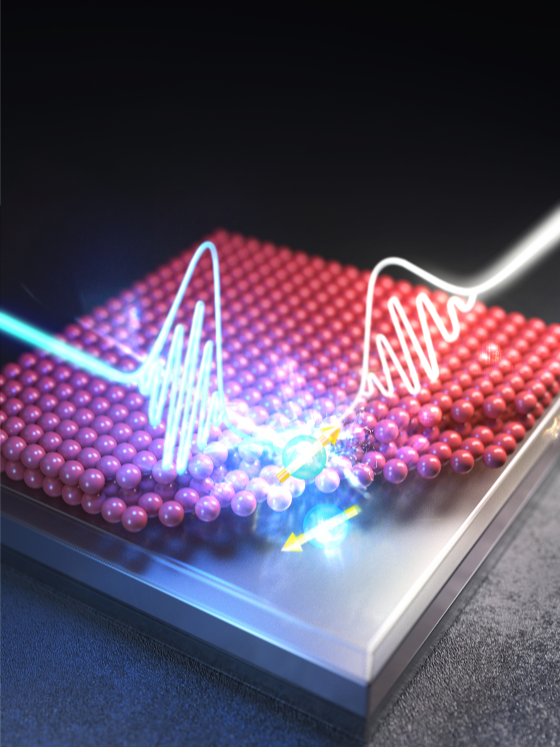주메뉴
- About IBS 연구원소개
-
Research Centers
연구단소개
- Research Outcomes
- Mathematics
- Physics
- Center for Theoretical Physics of the Universe(Particle Theory and Cosmology Group)
- Center for Theoretical Physics of the Universe(Cosmology, Gravity and Astroparticle Physics Group)
- Center for Exotic Nuclear Studies
- Center for Artificial Low Dimensional Electronic Systems
- Center for Underground Physics
- Center for Axion and Precision Physics Research
- Center for Theoretical Physics of Complex Systems
- Center for Quantum Nanoscience
- Center for Van der Waals Quantum Solids
- Chemistry
- Life Sciences
- Earth Science
- Interdisciplinary
- Center for Neuroscience Imaging Research(Neuro Technology Group)
- Center for Neuroscience Imaging Research(Cognitive and Computational Neuroscience Group)
- Center for Algorithmic and Robotized Synthesis
- Center for Genome Engineering
- Center for Nanomedicine
- Center for Biomolecular and Cellular Structure
- Center for 2D Quantum Heterostructures
- Center for Quantum Conversion Research
- Institutes
- Korea Virus Research Institute
- News Center 뉴스 센터
- Career 인재초빙
- Living in Korea IBS School-UST
- IBS School 윤리경영


주메뉴
- About IBS
-
Research Centers
- Research Outcomes
- Mathematics
- Physics
- Center for Theoretical Physics of the Universe(Particle Theory and Cosmology Group)
- Center for Theoretical Physics of the Universe(Cosmology, Gravity and Astroparticle Physics Group)
- Center for Exotic Nuclear Studies
- Center for Artificial Low Dimensional Electronic Systems
- Center for Underground Physics
- Center for Axion and Precision Physics Research
- Center for Theoretical Physics of Complex Systems
- Center for Quantum Nanoscience
- Center for Van der Waals Quantum Solids
- Chemistry
- Life Sciences
- Earth Science
- Interdisciplinary
- Center for Neuroscience Imaging Research(Neuro Technology Group)
- Center for Neuroscience Imaging Research(Cognitive and Computational Neuroscience Group)
- Center for Algorithmic and Robotized Synthesis
- Center for Genome Engineering
- Center for Nanomedicine
- Center for Biomolecular and Cellular Structure
- Center for 2D Quantum Heterostructures
- Center for Quantum Conversion Research
- Institutes
- Korea Virus Research Institute
- News Center
- Career
- Living in Korea
- IBS School
News Center
Suppressing the Auger recombination process in quantum dots- IBS research group reveals the underlying principle for controlling the transition dipole moment - Quantum Dot (QD) is a nanometer-sized semiconductor nanocrystal that has unique optical properties such as the ability to emit light in the range of optical frequencies depending on its size. QDs have already been applied to practical optoelectronic applications including light-emitting displays, solar cells, photodetectors, and lasers. In general, QDs have two distinct energy bands in which electrons can exist. They are the so-called “valence band” where electrons are fully occupied and the “conduction band” where electrons are empty, respectively. The gap between these two bands is called the “band gap”, where electrons cannot exist. Upon photoexcitation by light with higher energy than the band gap, electrons within the valence band can be excited and jump into the conduction band. A vacancy formed in the valence band after this process is called a “hole”, which is defined as a carrier having a positive charge. A hole usually pairs with an electron in the conduction band and forms a quasi-particle called an “exciton” that is bound via Coulomb interaction. After formation, the exciton can recombine spontaneously and emit light with the same energy as the band gap. The most important parameter in this process is the “transition dipole moment”, which is an electric dipole moment associated with the transition between the two states. Typically, the larger this quantity, the greater the recombination rate. The problem is that not all excitons emit light during the recombination process as mentioned above. Specifically, another type of recombination process called “Auger recombination” can occur frequently in quantum dots. Auger recombination is a nonradiative multicarrier process whereby the exciton recombination energy is not converted into a photon but instead transferred to a third charge. Typically, the Auger recombination is one of the biggest hindrances to improving the efficiency of QDs based optoelectronic devices, especially displays. To date, numerous spectroscopic studies have been conducted to suppress the Auger recombination process in QDs. However, most previous studies have mainly focused on modifying the structural characteristics of quantum dots and synthesizing new types of quantum dots structures. Therefore, research on active control of the Auger recombination process by manipulating the optical environment is lacking. The Center for Molecular Spectroscopy and Dynamics within the Institute for Basic Science (IBS), South Korea has successfully observed the Auger recombination in CdSe QDs occurring at a few picosecond timescales by utilizing transient absorption spectroscopy. The research group demonstrated that the process can be controlled through metamaterial nanostructures for the first time. Based on the fact that the Auger recombination process strongly depends on the transition dipole moment of excitons, the research team revealed that the interaction between transition dipole in QDs and its image formed by the nanostructure can suppress the Auger recombination process by reducing the amplitude of the net transition dipole moment. According to researchers, this study found a new way of manipulating the Auger process using nanostructures. They stressed that they first revealed the fundamental mechanism of suppressing the nonradiative Auger recombination by decreasing the amplitude of the net transition dipole moment through simply combining with external structures without complicating molecular technology. It is believed that the findings in this study will have an important implication in improving the efficiency of QD-based devices in the future. Their finding was published on December 23 in “Advanced Optical Materials (IF = 9.926)”, one of the prominent journals in the optics field.
Notes for editors - References - Media Contact - About the Institute for Basic Science (IBS) |
|||
|
|
| Next | |
|---|---|
| before |
- Content Manager
- Public Relations Team : Yim Ji Yeob 042-878-8173
- Last Update 2023-11-28 14:20












